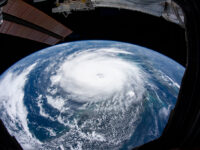Wildfires ravage the land, water is in scarce supply, and climate refugees seek shelter from greed and environmental catastrophe. Once, this was a 2024 dystopian fantasy built by Octavia Butler in her 1993 novel “Parable of the Sower,” but these fictional warnings seem eerily prophetic given today’s headlines.
Many readers have a fascination with climate dystopias like Butler’s. Since the 2020 lockdown, there has been a boom in fantasy and science fiction book sales. Despite the growing interest in the climate fiction – or cli-fi – genre, there seems to be a disconnect between what people are reading and actions taken in the face of real-world climate threats. In 2023, 72% of Americans believed global warming is occurring, and only 43% of Americans believed climate change will personally affect them.
After surveying 161 American readers of climate fiction, Rice University professor Matthew Schneider-Mayerson found that these readers tend to be younger, liberal-leaning, and more concerned about climate change than the general population. Rather than seeking mere escapism, these readers use fiction as a way to explore complex questions they may feel too lost or burnt out to ask. The study finds these works serve a vital function: helping readers visualize and emotionally process potential futures in ways scientific reports cannot. Research provides models and explanations of what might happen, but fiction illustrates what the world might look or feel like if climate change continues at its current pace. Popular works like “The Ministry for the Future” by Kim Stanley Robinson or “A Psalm for the Wild-Built” by Becky Chambers depict futures shaped by climate issues, and the characters tasked with confronting them, either to their benefit or destruction. These dystopian and utopian narratives prompt readers to ponder these issues and contemplate the relationships between society, technology, and the planet.
The majority of responses to climate fiction were negative — readers reported feeling “helpless,” “incredibly sad,” “scared,” and “depressed.” While these reactions demonstrate the power of these narratives, environmental psychologists warn that such negative framing can backfire, causing people to avoid thinking about climate change rather than taking action. Perhaps most tellingly, when readers did take action after reading climate fiction, their responses often focused on small-scale individual behaviors rather than broader systemic changes. One reader began using reusable shopping bags after finishing “Flight Behavior,” while another started taking shorter showers after reading “The Water Knife.” While admirable, these individual actions fall far short of the collective political action needed to address climate change.
The research suggests that climate fiction’s greatest impact may be in its ability to spark conversations about environmental futures. Nearly half of readers discussed these books with friends and family, creating opportunities to break what researchers call the “spiral of silence” — the tendency to avoid climate change discussions. Climate fiction alone may not bridge the gap between awareness and action, but these narratives excel at highlighting the potential consequences of inaction and inviting readers to imagine how they might bring about a better future. Pairing this messaging with lessons about the effectiveness of collective action in mitigating climate change’s effects may encourage a new cultural awareness about what solutions are out there.
“Climate fiction alone may not bridge the gap between awareness and action, but these narratives excel at highlighting the potential consequences of inaction and inviting readers to imagine how they might bring about a better future.”
As climate change accelerates, the growing appetite for environmental fiction may signal not just a need for escapism, but a readiness to confront these challenges. Fiction has always served as a space for imagination, yet the question remains: Can we channel our collective imagination to prevent these fictional futures from becoming reality? The answer may depend less on the stories themselves and more on our broader cultural understanding of how to effectively respond to the climate crisis.






